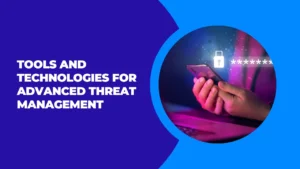Physical Address
304 North Cardinal St.
Dorchester Center, MA 02124
Physical Address
304 North Cardinal St.
Dorchester Center, MA 02124

As cyber threats become more refined, businesses must adopt robust measures to protect their assets. Besides securing your data, this is a matter of consumer trust and maintaining the reputation of the business. This growing need has led to the development of various tools and technologies. They are designed to mitigate risks and safeguard information.
Effective protection strategies involve a combination of proactive measures and reactive responses. Advance threat management systems are critical for identifying and neutralising potential risks before they cause significant damage. Organisations can create a resilient defence mechanism against potential intrusions with the right tools and technologies.
An Intrusion Detection System (IDS) is an essential component in the arsenal of cyber defence tools. IDSs monitor network traffic for suspicious activities and potential security breaches.
They come in two main types: network-based and host-based. Network-based IDSs analyse data packets travelling across the network, while host-based IDSs focus on individual devices.
These systems are equipped with predefined rules to detect anomalies. When unusual behaviour is detected, IDSs alert administrators, enabling them to take swift action. Modern IDSs use machine learning algorithms to improve their accuracy and reduce false positives, making them more effective at identifying real dangers.
Security Information and Event Management (SIEM) systems enhance organisational security. SIEM solutions collect and analyse data from various sources, including network devices, servers, and applications. SIEMs provide a comprehensive view of the security landscape by correlating events from different systems.
SIEM systems help in detecting patterns indicative of malicious activities. They offer real-time monitoring, historical data analysis, and automated incident response.
By integrating threat intelligence feeds, SIEMs can update their knowledge base, allowing them to recognise and respond to new and emerging dangers promptly.
Endpoint Detection and Response (EDR) tools are designed to monitor and protect endpoint devices like laptops, desktops, and mobile devices.
EDR solutions continuously track activities on these devices, looking for signs of malicious behavior. They offer advanced capabilities like behavioural analysis and automated response actions.
When a threat is identified, EDR tools can isolate the affected device, preventing the spread of malware within the network. They also provide detailed forensics data, helping analysts understand the attack vector and take corrective measures.
EDR solutions are vital for maintaining a secure environment where endpoint devices are often the primary targets of cyberattacks.
Next-generation firewalls (NGFWs) evolve traditional firewalls, offering enhanced features and capabilities. NGFWs go beyond basic packet filtering and stateful inspection, providing deep packet inspection, application awareness, and integrated intrusion prevention. They can identify and control applications regardless of the port or protocol used.
NGFWs are instrumental in blocking advanced threats. They can enforce granular security policies, ensuring only authorised traffic is allowed while malicious traffic is blocked. By incorporating threat intelligence, NGFWs stay updated on the latest attack vectors, enabling them to provide robust protection against evolving cyber breaches.
Threat Intelligence Platforms (TIPs) aggregate and analyse threat data from multiple sources to provide actionable insights. Tips collect information from threat feeds, open-source intelligence, and internal data to build a comprehensive landscape. This intelligence helps organisations understand attackers’ tactics, techniques, and procedures (TTPs).
TIPs facilitate collaboration between security teams, enabling a coordinated response. They also integrate with other security tools, enhancing their effectiveness by providing context-rich information.
Organisations can anticipate potential attacks and implement preventive measures by leveraging threat intelligence.
In conclusion, adopting appropriate tools and technologies is paramount for organisations to achieve effective advance threat management.
By employing this technology, organisations can build a resilient defence against cyber threats. When integrated and utilised effectively, these solutions create a robust security posture, protecting valuable data and systems from potential risks.